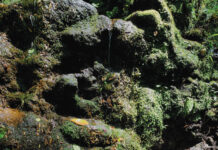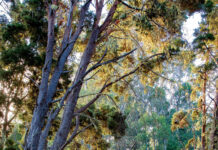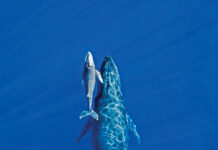Story by Judy Edwards | Photography by Bryan Berkowitz
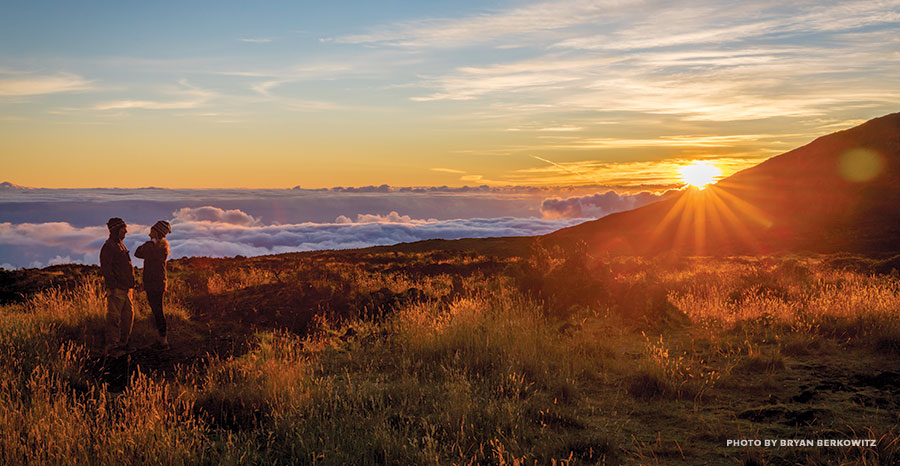
The great, surreal summit wilderness of Haleakalā, when viewed from the sturdy, much-grasped railing at the rim, is nearly impossible to comprehend. On a cloudy day columns of mist rise and fall as if sentient, alternately cloaking and then revealing staggered cliffs, rusty Martian cinder cones, and mysterious jagged outcrops. On a clear day the mind simply boggles. A rumpled, multicolored, volcanic wonderland tumbles away from your eyes, all of it contained in an elongate bowl in the sky.
Part of the challenge is the mind’s inability to determine scale. Because the summit wilderness sits many thousands of feet above the ocean in its own sea of clouds, there is no way to understand whether you are seeing something vast, with towering features, or something compact, a Toyland of Crayola colors in all the chocolates, reds and greens. It’s affectionately but wrongly called “the crater”; the S-shaped valley is erosional, carved by wind and water over millennia, interrupted by volcanic episodes whose later eruptions created those cinder cones. The valley is about seven miles long and about three miles wide, and if you walk from the rim where you stand, gaping, to the far side, you’ll have dropped about 3,000 feet. This high-altitude desert looks tough and craggy, but its splendid isolation has left it vulnerable in ways that might surprise you. Any human touch on this sand-painting terrain is there, a scar, for a long, long time.
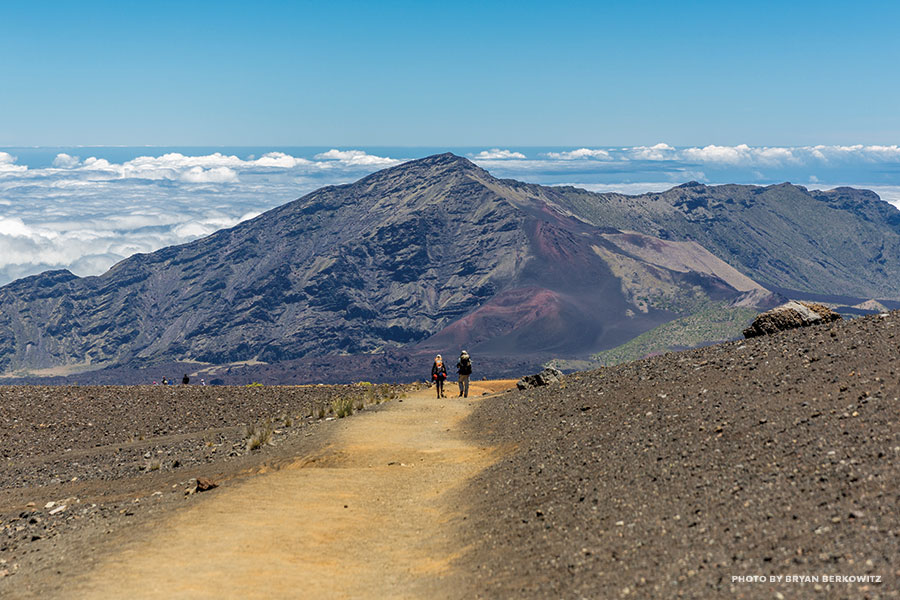
But there is a way to really ground your mind and your hands in this landscape, a way that lets you give back to it while you learn. Join a service trip with the aptly named Friends of Haleakala National Park, a nonprofit whose purpose is “to support educational, cultural, research, and service activities relating to the park and its ecosystems.” I did that for three days last August, crunching along in the rare sun and gritty cinders behind Matt Wordeman, the organization’s president and soft-spoken but indefatigable trip leader, a few other volunteers behind us, gamely tottering under their cameras and well-stuffed gear.
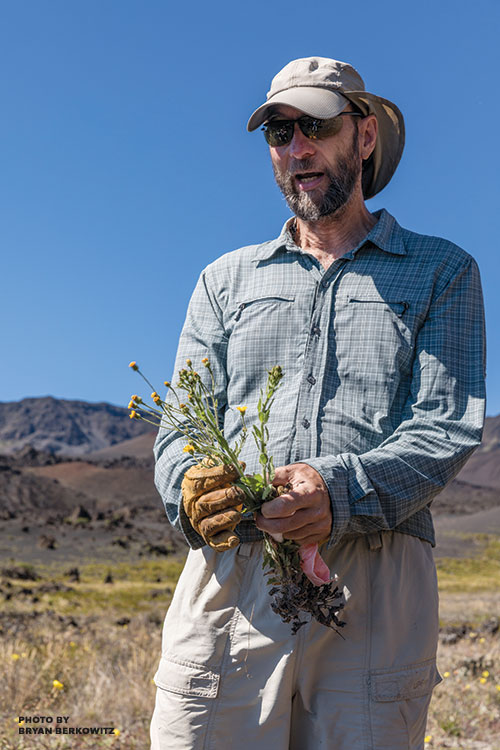
By Matt’s admission it was his well-over-hundredth trip leading service volunteers. Gerry and Deb, a Pukalani couple who run a sustainability nonprofit, had made a few forays down the summit trails but never committed to an overnight. Lia, a fair-skinned, self-described caretaker and student, piloted her moped around from Hāna for this adventure; and Bryan, our photographer, has significant Haleakalā time under his belt, thanks in part to his tenure with the Maui Invasive Species Committee. I’d been on the trails for years under various hats: as a guide for a hiking company; as an interpreter for the park’s other nonprofit partner, the Hawai‘i Pacific Parks Association; and as a recreational hiker with friends. I’d also helped pull invasive weeds on a chilly, misty, completely satisfying service trip at least ten years ago. I was no stranger to Haleakalā, but it had been at least six years since I’d spent serious time and effort there.

